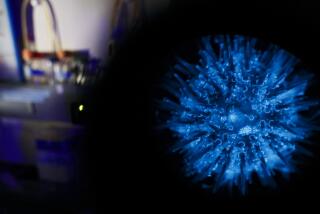The beasts within
I’ve come to love my inner fish. My inner worm, jellyfish and sponge too. And I can tell you exactly when I first recognized this infatuation: in September 2003, the year I was pressed into teaching human anatomy to first-year medical students at the University of Chicago.
Human anatomy is a formative experience in the training of future physicians -- it is the students’ grand introduction to the body, when they memorize the names of bones, organs and nerves as they painstakingly dissect a real cadaver. That first year, as well as in years after, the medical students were curious about what kind of doctor I am. Perhaps their first-year mentor is a surgeon, a radiologist or internist? My response often led to bafflement and, not infrequently, concern. I am a fish paleontologist who studies finned creatures that have been extinct for more than 370 million years.
What possible relevance, you may wonder, could fish paleontology have to medicine or human anatomy? As it turns out, a lot. The best road maps to our own bodies lie in the fossils, DNA and embryos of other creatures. The hands I’m using to type right now arose in extremely ancient creatures. I can trace the structure of the bones in my arm back hundreds of millions of years in fossil mammals, reptiles and even fish.
But why stop at arms? Much of our head, jaws, ear bones and voice box correspond to the gill structures in fish. In fact, the muscles, nerves and blood vessels that supply these bones also supply gill structures in a variety of fish. How do I know this? By comparing the embryo of a human to that of a fish, a shark or any other creature with a skull.
When you know how to look, fish are just one way station in our historical path. In fact, we share deep similarities with all living creatures on our planet. Seeing the history inside our bodies is like peeling an onion: The first layers we see reveal the history we share with primates (large brains and opposable thumbs). Peel deeper and we find the layers of history shared with other mammals (hair and breasts), reptiles (our distinctive way of chewing food), fish (arms, legs, backbones and heads), worms (an anus on one side of the body and a mouth on the other), jellyfish (the DNA recipe that builds our bodies), sponges (our many celled bodies) and so on.
Even as we are discovering more about the DNA that builds animal bodies (including our own), new fossils from around the world are continuing to crop up that help explain our anatomical history. Just as we have a family tree that extends to our parents, grandparents and so on, our human family tree extends to other living beings. The same DNA technology that allows courts and forensics experts to identify perpetrators and fathers allows us to categorize the relationships between our species and others. Do this and we see that inside every organ, cell and gene of our bodies lies more than 3.5 billion years of the history of life.
Unfortunately, my inner fish is also a source of pain. It turns out that many of the ills we suffer relate to our evolutionary past. Our deep history was, at different times, spent in ancient seas, forests and savanna plains, not office buildings, basketball courts or cars.
This extraordinary disconnect between our past and our human present means that our bodies fall apart in certain predictable ways. Take the body plan of a fish, dress it up to be a four-legged mammal, then tweak and twist that mammal to make a creature that walks on two legs, talks, thinks and has super-fine control of its fingers, and we have a recipe for problems.
We can only dress a fish up so much without paying a price. In a perfectly designed world -- one with no history -- we would not have to suffer everything from hemorrhoids to cancer. I learned this when, after a morning jog, my knee swelled up like a grapefruit. A visit to one of my colleagues in the surgery department, followed by an MRI scan, revealed a torn meniscus, the probable result of 25 years of carrying a backpack over rocks and talus in the field.
When you hurt your knee, you will almost certainly injure one of three structures: the medial meniscus, the medial collateral ligament or the anterior cruciate ligament. So regular are injuries to these three parts of your knee that these three things are known in the medical jargon as the “unhappy triad.” This is visible evidence of the pitfalls of having an inner fish. Fish do not walk on two legs. But fish, which evolved about 370 million years ago, do have the major bones that make our knees: the femur, tibia and fibula. All within a fin that they use to swim, not to jog, ski or play basketball.
But just as the inner fish can be a source of pain, it can also yield the remedies for many of the ills we suffer. The Nobel Prize committee has embraced the zoo and aquarium inside our bodies. Nobel Prizes in medicine or physiology over the last decade and a half have gone to people working on sea urchins, flies, yeast and worms. In fact, two of these Nobels have gone to five people over the last few years working on a tiny little worm no larger than a comma on this printed page that lives in the dirt. Yet discoveries on this little creature, Caenorhabditiselegans, are providing new tools to understand how our genetic material functions in health and disease.
I like to think that when cures to diseases as varied as Alzheimer’s and various cancers are developed in the next few decades, that work will ultimately be derived from experiments on flies and worms. Is there any more powerful statement about the importance of our deep evolutionary connection to the rest of life than that?
Neil Shubin is a professor of anatomy at the University of Chicago and provost of the Field Museum. He is the author of “Your Inner Fish: A Journey Into the 3.5-Billion-Year History of the Human Body.”






